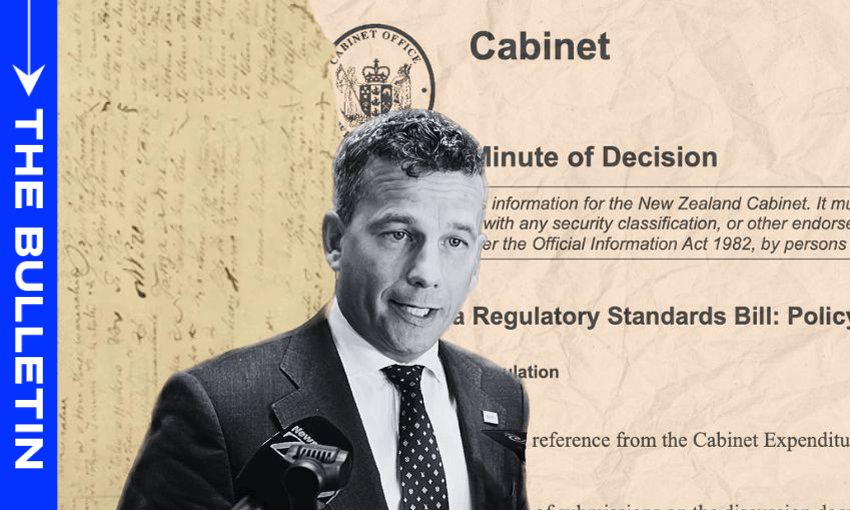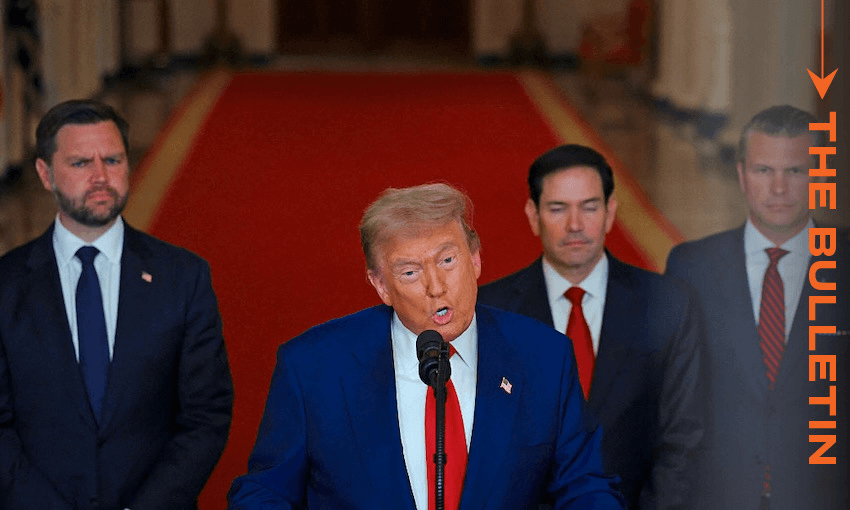As the deputy PM defends his controversial regulatory standards bill, his opponents say he’s harassing critics and threatening academic freedom, writes Catherine McGregor in today’s extract from The Bulletin.
To receive The Bulletin in full each weekday, sign up here.
Mayor accuses Seymour of harassment over Facebook posts
Wellington mayor Tory Whanau has asked prime minister Christopher Luxon to investigate David Seymour for what she describes as “online harassment and intimidation” of academics, Stuff reports. In a letter to the PM, Whanau wrote that Seymour’s conduct “could incite behaviour that spills into real-world violence”, is “a blatant attempt to stifle academic freedom and any dissenting opinion” and breaches Sections 2.53 and 2.56 of the Cabinet Manual.
At issue are Seymour’s “Victim of the Day” Facebook posts, which target individual critics of the regulatory standards bill by name and photo, accusing them of suffering from “regulatory standards derangement syndrome.” Seymour, who is acting prime minister this week, has defended the posts, saying they highlight exaggerated claims and do not breach the Cabinet Manual. But Whanau argued that “such behaviour by the deputy prime minister compromises the safety and wellbeing of the targeted individuals and sets a dangerous precedent”.
Salmond: ‘Trumpian rhetoric’ used to target scholars
Among those targeted is Dame Anne Salmond, the distinguished anthropologist, public intellectual and former New Zealander of the Year. In a column for Newsroom, she responded with alarm to Seymour’s posts, calling them “an online campaign of intimidation against university scholars”. She noted that the term “derangement syndrome” is borrowed from “Trump derangement syndrome”, which the US president likes to accuse his critics of suffering, and compared Seymour’s tactics to Trump’s own attacks on academic institutions in recent months. “This is a senior politician who has vigorously argued for freedom of speech in universities,” Salmond wrote, yet is now deploying “Trumpian rhetoric” against critics of his own bill. She also said she would lodge a formal complaint with the Cabinet Office.
In her original column about the bill, also published in Newsroom, Salmond described it as “a dangerous piece of legislation” that “expresses a contempt for collective rights and responsibilities, public goals and values, and liberal democracy”. She said the bill lacked a democratic mandate, centralised power in the hands of the minister for regulation (Seymour himself), and privileged private interests over public good.
The compensation clause question
One of Salmond’s more contentious claims about the bill is that it could force governments to compensate corporations for loss of profit due to regulation. She warned that the legislation could require “those who benefit from laws or regulations to compensate others for the losses of profit that may arise”. However, public law expert Eddie Clark has challenged that interpretation, pointing to explicit clauses that prevent the bill from creating legal rights or obligations. “Absolutely nothing in the act can found litigation by a private individual,” he told Marc Daalder of Newsroom.
While Clark acknowledged the principles in the bill may influence future legal or policy thinking, he said critics like Salmond – who is not a lawyer – had “over-egged” the likely effects. Still, Clark agreed the bill reflected “libertarian minimalist state principles” that could gradually shape lawmaking in favour of corporate interests.
The ‘bot’ backlash
Seymour has also stirred controversy by dismissing tens of thousands of critical submissions on the bill as the work of “bots”. He claimed “99.5%” of submissions to an earlier discussion document were fake, the result of “a smart campaign with a bot”. That’s not exactly true. Speaking to RNZ’s Ella Stewart, Otago University law professor Andrew Geddis called the term “an incredibly dismissive way to refer to individual New Zealanders taking the time to actually engage”. In fact, most submissions used online tools created by groups like ActionStation, which allow people to easily send pre-written or lightly edited statements. These are not bots in the technical sense, but part of what Stewart described as “digital democracy”.
Clerk of the House David Wilson confirmed such practices are legitimate: “It’s happened for many, many years. It used to be photocopied forms. Now, often it’s things online.” With submissions on the regulatory standards bill closing yesterday, we’ll soon learn how many so-called bots submitted on the bill itself.


